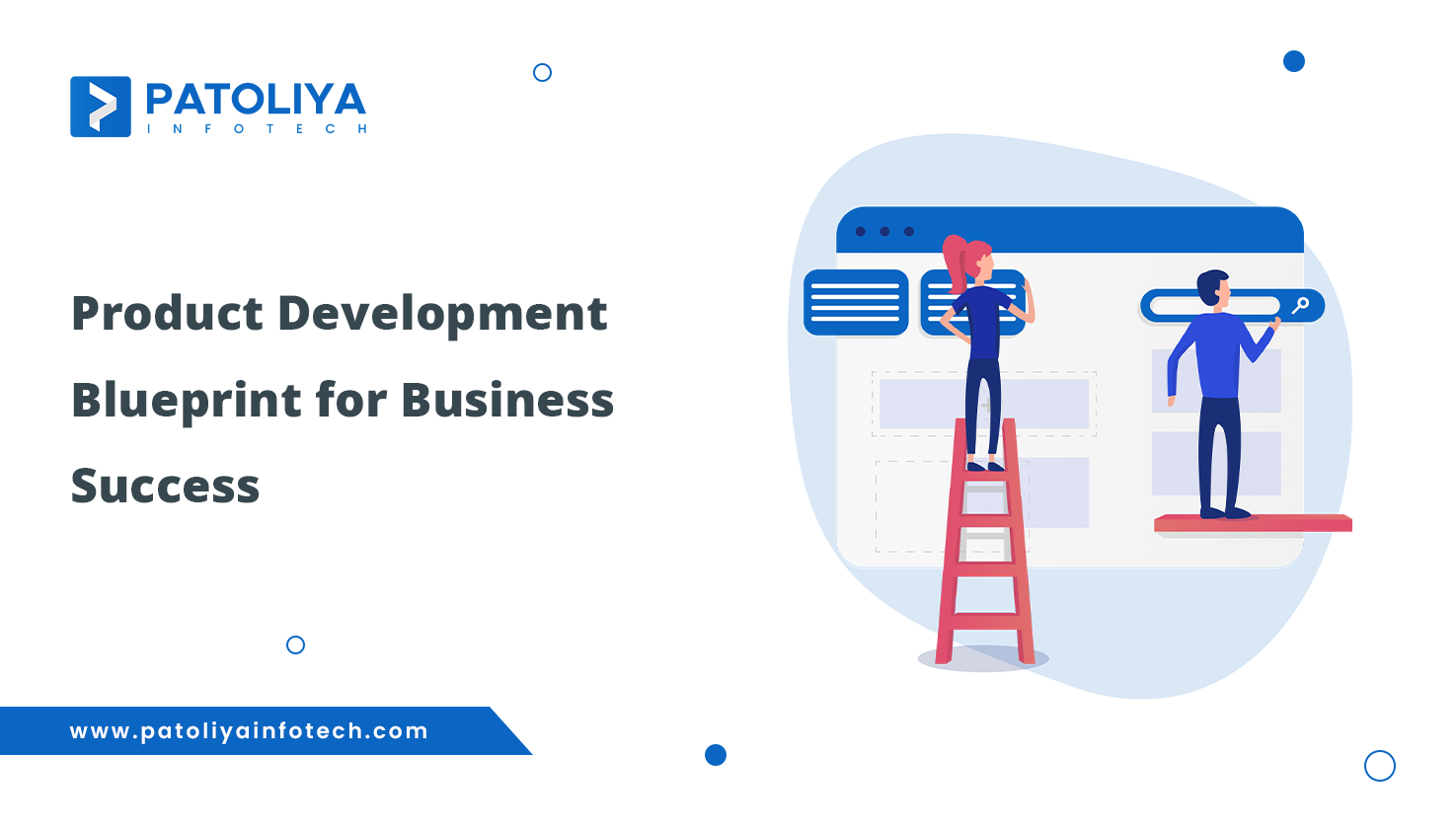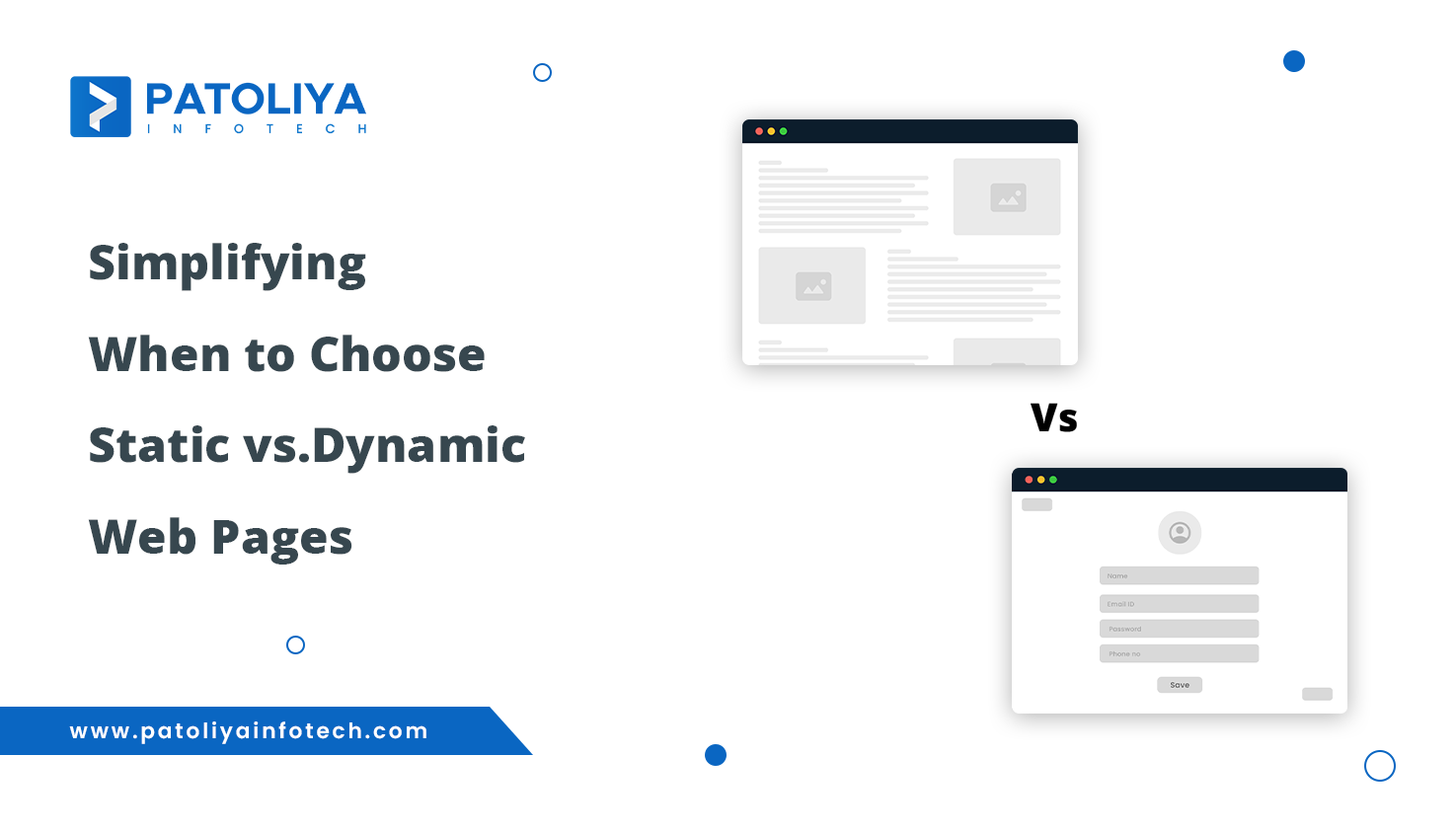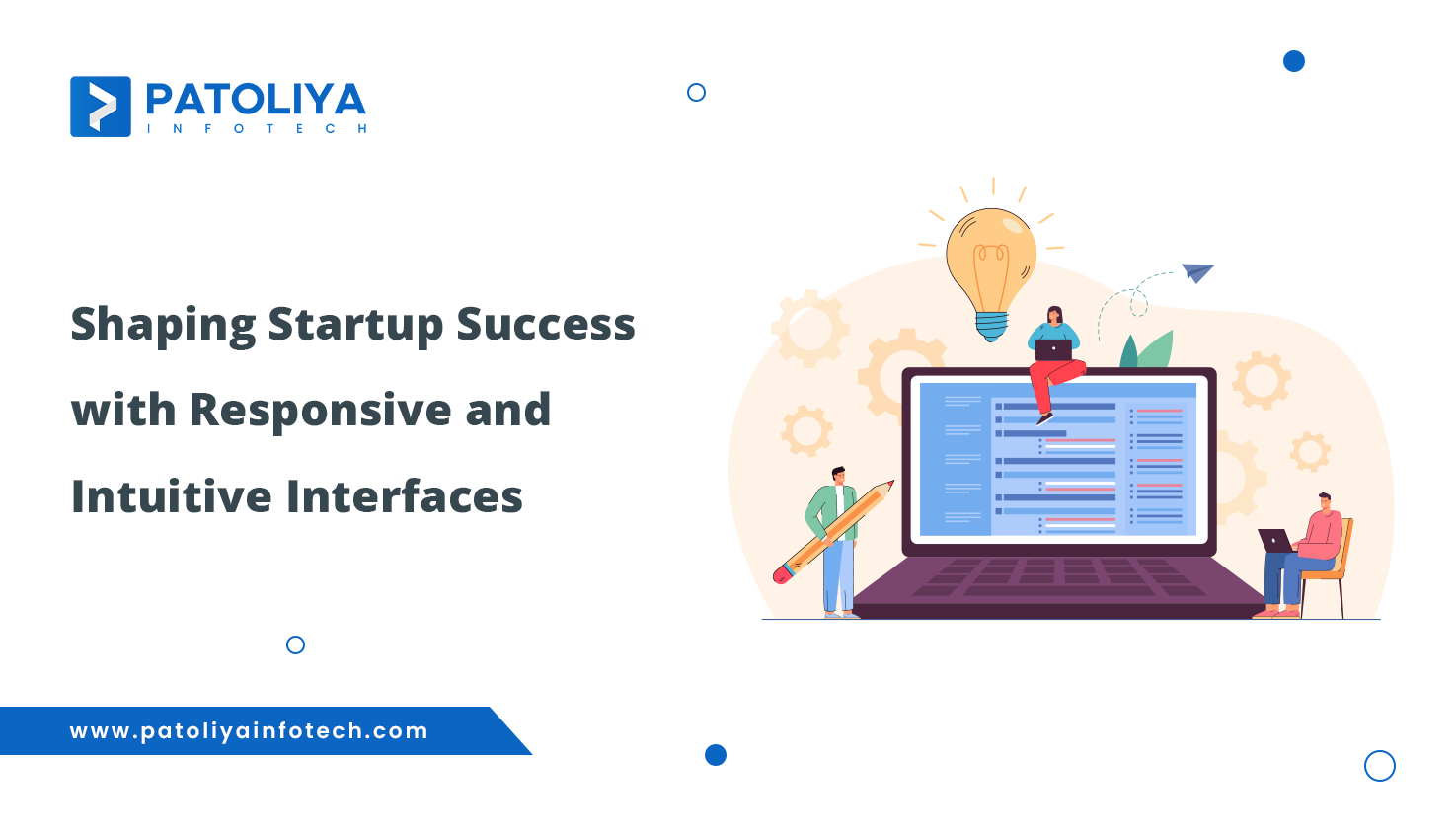Software Development Methodologies: Important Information
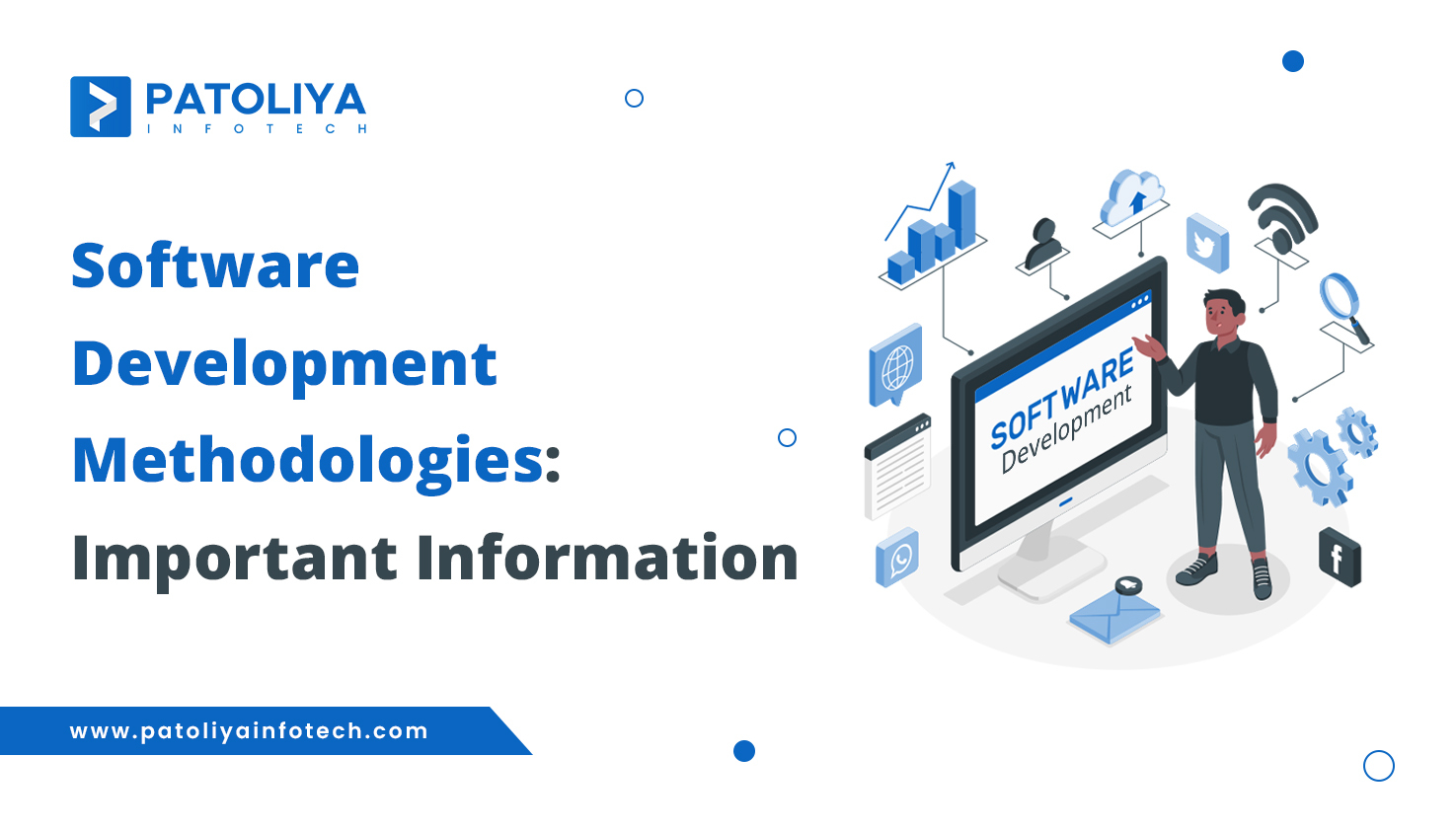
A software development methodology, put simply, is the fundamental framework that allows software engineers to organize, structure, and manage the entire process of creating software or information systems.
The introduction of various software development approaches contributes to the ongoing evolution of the technology sector. While the majority of these models were developed in the last few decades to satisfy certain project requirements, they are still being updated and innovated to increase efficiency and produce the best outcomes. These cutting-edge methods are intended to boost success and development efficiency.
In software industry, choosing the right methodology is crucial to minimize time, resources, and costs for project success. Choosing the correct methodology for each distinct scenario might be challenging given the wide range of approaches available.
Top professionals from Patoliya explore the area of software development processes in this extensive study, analyzing their advantages and disadvantages. We examine each methodology's strengths and weaknesses, covering everything so you can decide which is best for your project.
Let's get your software development career going!
What is a software development methodology?
Software development methodology encompasses a dynamic and structured approach to the entire life cycle of software, consisting of well-defined phases such as design and development. It typically takes the shape of clearly defined phases. It aims to explain the specifics of a piece of software's life cycle.
Software development techniques offer a road map for programmers or development teams, specifying rules for how they should cooperate and communicate, whether through talks, documentation, or even manually drawn diagrams on paper.
Top software development methodologies
1. Agile development methodology
The Agile process is a dynamic approach to transforming software requirements into reality. It involves continuous planning, understanding, communication, development, delivery, and updating. To ensure a thorough knowledge of objectives and prompt solutions, close team-client engagement is one of the key components of Agile techniques.

Pros:
‣ Accelerated software deployment resulting in swift software delivery.
‣ Agile methodology's flexible approach enables quick adaptation to changing client requirements.
‣ Project requirement changes are efficiently addressed with minimal impact on the timeline.
‣ Significant enhancement in the quality of the final product.
Cons:
‣ Agile places less importance on documentation and more on producing working software, which might result in fewer guidelines behind.
‣ There is a danger that the developers will be guided incorrectly because of its emphasis on speedy changes.
‣ Agile puts less priority on documentation, which can generate issues later in the development process.
‣ It can be difficult to maintain consistent cooperation.
2. DevOps deployment methodology
DevOps, a buzzword in software development methodologies, has gained immense popularity due to its outstanding benefits for customers. Unlike the traditional siloed approach of separate Development and Operations teams, DevOps brings them together as a cohesive unit throughout the entire lifecycle of a project.
This integrated approach is now widely adopted by businesses, enabling seamless coordination between development, quality assurance, security, and other operations through the continuous integration and continuous delivery model. DevOps revolutionizes the way software development and operations work hand in hand, unlocking unprecedented efficiency and productivity for businesses.
Learn more about DevOps for Seamless Software Development

Pros:
‣ It is a quicker and simpler framework that enables effective business growth.
‣ Enhances workplace stability and product quality.
‣ Reliability As the product and infrastructure development, the produced products become more durable and secure, giving them a competitive advantage over competitors.
‣ Even as infrastructure and products change more frequently, it still provides reliability.
Cons:
‣ Indeed, embracing DevOps necessitates a cultural shift, where businesses must revitalize their processes to foster efficient growth.
‣ DevOps methodology demands a distinct security strategy at each stage, as it does not inherently guarantee security.
3. Waterfall development method
The Waterfall Methodology, a classic style of software development, is widely recognized as one of the most popular software development methodologies. This linear sequential flow model is preferred by many businesses, as it provides a clear and structured software development process. Each phase must be completed before moving on, with cross-checking to ensure earlier phases are accomplished. However, this traditional approach is rigid and lacks the flexibility to handle changes in requirements, as it does not allow for revisiting previous phases.
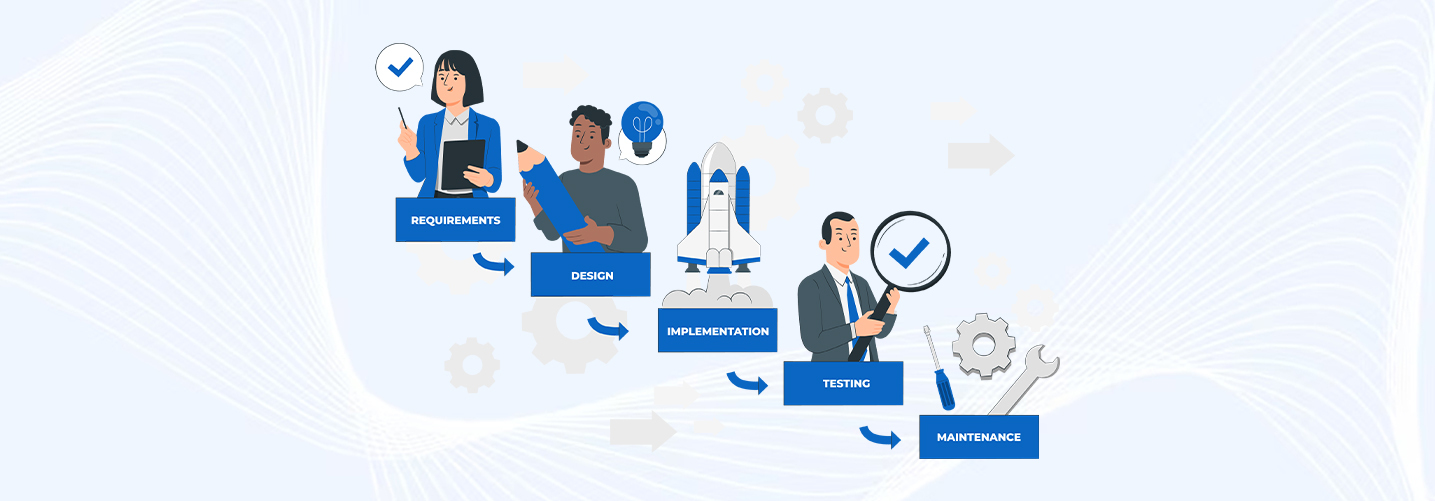
Pros:
‣ The waterfall model is highly straightforward, simple to understand, and employs methodology. For this reason, it is advantageous for newbies or inexperienced developers.
‣ The use of the waterfall development technique speeds up the processing and completion of all phases.
‣ With the waterfall approach, there is no space for information to be miscommunicated because it is specified in detail at each level.
Cons:
‣ The waterfall method cannot be used for projects that require ongoing maintenance.
‣ Early client feedback isn't taken into account, which raises the possibility of the project deviating from its original course.
‣ Until it reaches the last stage of the cycle, there is no chance that we will be able to produce any software that is usable.
‣ The team may spend too much time documenting rather than providing solutions that address the problems of the users.
4. Scrum Development Methodology
Scrum, an undoubtedly flexible software development methodology, is highly regarded for its incremental and iterative approaches, based on the Agile philosophy. The dynamic roles of the Product Owner, Scrum Master, and Development Team work in unison to deliver on client requirements. The Product Owner takes input from the client, keeping the team on track, while the Scrum Master expertly facilitates the Scrum process for team members. The Development Team is responsible for executing the development with utmost efficiency.
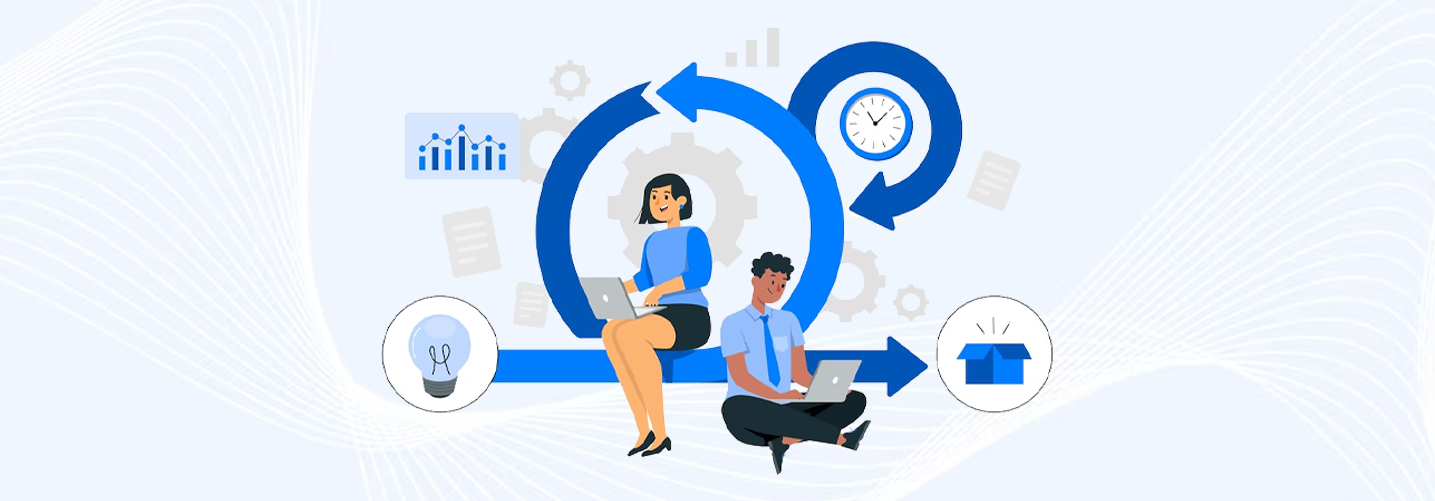
Pros:
‣ Use Scrum Development for quick, innovative developments, efficient coding, and easily fixable testing errors.
‣ Scrum is particularly flexible to changes because it involves regular input.
‣ It is a method for solving issues immediately.
‣ Quick sprints and ongoing feedback make it simpler to adapt to the changes.
‣ Delivering a high-quality item on time is simpler.
Cons:
‣ For Scrum to be effective, each team member must be equally talented and dedicated.
‣ If people aren't cooperative, the chances of the project failing are very high.
‣ It is suitable for small quick tasks but not for lengthy, difficult ones.
‣ Only skilled team members qualify for this methodology. The project cannot be completed on time if the team is made up of inexperienced individuals.
5. Prototype Methodology
The prototype model flips the traditional software development process on its head. Instead of creating fully-fledged software from scratch, developers first craft a prototype version of the final product. This prototype is then shared with customers for testing, evaluation, and feedback, allowing for refinement through multiple iterations. This strategy differs from others in that it places a high value on a comprehensive evaluation, identifying potential problems before actual development begins.

Pros:
‣ Presenting the prototype to the client not only clarifies the functionality developed in the software but also provides an immersive experience, elevating customer satisfaction and comfort to new heights.
‣ Revise the scope of refinement and modify the requirements accordingly to incorporate the latest alterations.
‣Ensures that the customer is satisfied with the "product" before beginning real development work.
‣ Utilize the prototype to gather precise details that will pave the way for the creation of a polished final product.
Cons:
‣ Sometimes after seeing an earlier prototype, customers request delivery of the finished product.
‣ Too many changes to the project are not welcomed because they easily interrupt the current workflow of the entire software development process.
‣ After experiencing the initial prototype, customers might not be happy or interested in the concept.
As like methods are important Maintaining Good Relations with Employees is also plays the main role.
6. Lean Development
The lean software development approach is all about minimizing waste and maximizing value. Through careful examination and pre-planning, this methodology aims to eliminate any unnecessary time or financial investments. Quick and continuous feedback is integral to ensuring that the project stays on track and moves forward efficiently.
When implementing this method, developers are given the authority to spot and fix any issues that may disrupt their work. The ultimate objective is to build a system that functions smoothly and effectively. Additionally, the lean methodology respects people and acknowledges the importance of effective communication in encouraging collaboration and teamwork among the development team members.

Pros:
‣ Reduces project waste like unnecessary codes, meaningless documentation, and repetitive tasks.
‣ By applying lean principles, development costs can be significantly minimized.
‣ Quickly delivers by eliminating waste and pointless processes
‣ Improved cooperation allows for increased focus on important tasks with a sense of purpose.
Cons:
‣ A team of highly qualified engineers is necessary for lean development to succeed, yet creating such a team is difficult.
‣ The possibility of delays brought on by specific obstacles or a lack of resources
‣ Good documentation is necessary to make sure all the components are developed appropriately.
7. Rapid Application Development (RAD) Methodology
Rapid Application Development (RAD) is a methodology focused on fast prototyping and iterative development. It aims to accelerate the software development process by emphasizing quick iterations and user feedback. RAD's key principle is to reduce the planning phase and involve users extensively in the design and development stages.

One of RAD's strengths is its ability to adapt to changing requirements. It facilitates quick iterations, allowing developers to build prototypes rapidly and gather user feedback early in the process. This feedback loop enables continuous improvements and ensures that the final product meets user expectations.
Moreover, RAD encourages reusability of components and modules, promoting a modular design approach. By reusing components, RAD increases development speed, reduces redundancy, and maintains consistency across different parts of the application.
Pros:
- Rapid Prototyping: RAD allows for quick prototyping, enabling stakeholders to visualize the software early in the process. This facilitates prompt feedback, ensuring that the final product meets user expectations.
- Flexibility: Its iterative approach permits flexibility in accommodating changes. RAD is well-suited for projects where requirements are subject to frequent modifications.
- Reduced Development Time: By emphasizing iterations and involving users in the design phase, RAD can significantly reduce development time, promoting quicker delivery of functional software.
Cons:
- Dependency on User Involvement: Heavy reliance on user participation can sometimes lead to delays if stakeholders are unavailable or decisions are slow to be made.
- Complexity Handling: For large-scale and complex projects, RAD might face challenges in managing the increased complexity that arises with rapid iterations and frequent changes.
8. Crystal Methods Methodology
Crystal Methods are a family of lightweight, adaptable methodologies that prioritize the human aspects of software development. Each Crystal methodology is tailored to fit the specific project's characteristics, team size, and priorities. The aim is to strike a balance between process and people, recognizing that different projects require different levels of formalization.
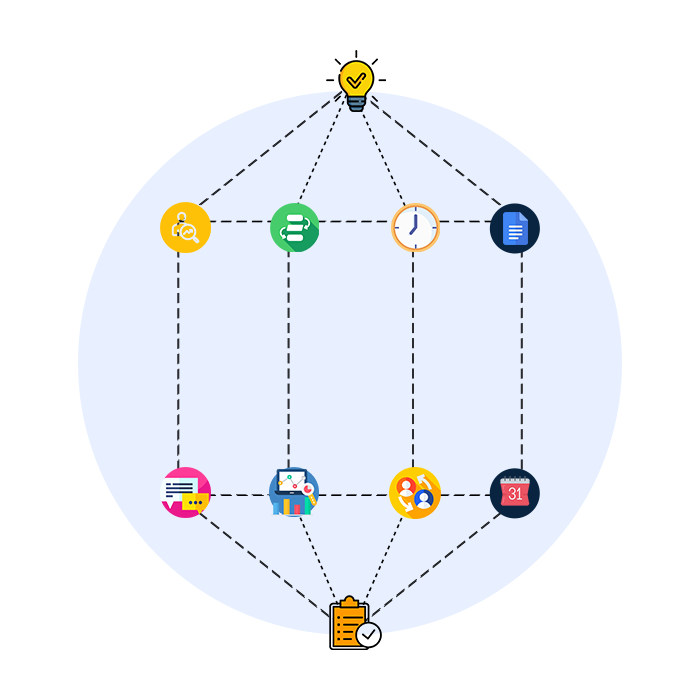
Crystal methodologies place a strong emphasis on team collaboration, communication, and individual talents. By acknowledging the human factor, these methodologies strive to create a work environment that maximizes productivity and creativity.
Furthermore, Crystal methods advocate for early and frequent deliverables. By breaking down the project into smaller, manageable components, teams can deliver functional parts of the software regularly, ensuring continuous progress and regular feedback.
Another core principle of Crystal is its focus on improving the project environment. By regularly reassessing and adapting the methodology to suit the project's evolving needs, Crystal methods aim to create a more efficient and conducive working environment for the development team.
Pros:
- Adaptability: Crystal methodologies offer adaptability and flexibility by tailoring the process to suit the project's unique characteristics, team dynamics, and goals.
- Human-Centric Approach: By prioritizing human interaction and acknowledging individual talents, Crystal methods foster a conducive work environment, enhancing team morale and productivity.
- Early Deliverables: Breaking down the project into smaller deliverables ensures early and frequent deliveries, providing continuous progress and opportunities for feedback.
Cons:
- Requirement of Experience: Implementing Crystal methodologies might require a certain level of experience and expertise to effectively customize the approach according to the project's needs.
- Lack of Prescriptive Guidelines: For some teams, the absence of strict guidelines might lead to ambiguity or uncertainty in the execution of the methodology.
9. Lean Startup Methodology
While not strictly a software development methodology, the Lean Startup approach has gained popularity in the tech industry, especially for startups developing software products. The Lean Startup methodology focuses on creating and managing startups by continuously testing assumptions, gathering feedback, and making data-driven decisions.
The methodology advocates for building a minimum viable product (MVP) - a basic version of the product with essential features - and quickly releasing it to gather user feedback. This feedback loop helps in validating assumptions, identifying market needs, and iterating on the product accordingly.
Moreover, Lean Startup encourages a build-measure-learn cycle, where startups build a hypothesis, test it by releasing the MVP, measure the results, and learn from user feedback. This iterative process allows startups to pivot or persevere based on real data and user insights.
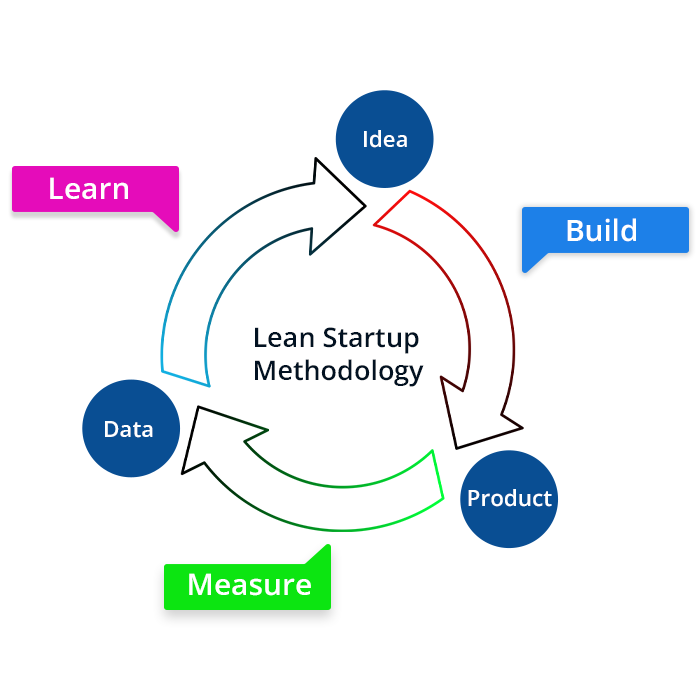
Pros:
- Efficient Resource Utilization: Lean Startup minimizes resource wastage by focusing on building a minimum viable product (MVP) to test assumptions and gather feedback before extensive investment.
- Data-Driven Decisions: Emphasizing data collection and analysis allows for informed decision-making, reducing the risk of developing products that lack market demand.
- Continuous Improvement: Its iterative nature promotes constant learning, allowing startups to pivot or iterate based on validated learning from user feedback.
Cons:
- Potential for Premature Scaling: Startups may face the temptation to scale prematurely based on initial success, risking overcommitment before thoroughly validating their business model.
- Limited Initial Features: Releasing an MVP might result in a product with limited functionalities, potentially leaving early adopters wanting more, impacting user satisfaction.
Wrap Up
Choosing the right way to make software is a bit like picking the best tool for a job. Each method, like Agile, Waterfall, DevOps, Scrum, Prototype, Lean Development, RAD, Crystal Methods, or Lean Startup, has its own strengths and weaknesses. They're like guides that help software creators figure out how to do their work.
Throughout our journey, we've explored these different methods. Agile is flexible, Waterfall is more structured, DevOps brings teams together, Scrum is adaptable, and so on. Each method gives a different way of making software, and each has its own perks and things to watch out for.
Understanding these methods is more than just knowing their features. It's about using their strengths to solve the specific challenges that come up when making software. These methods help software creators find the best way to make great software in a world that's always changing and evolving.
